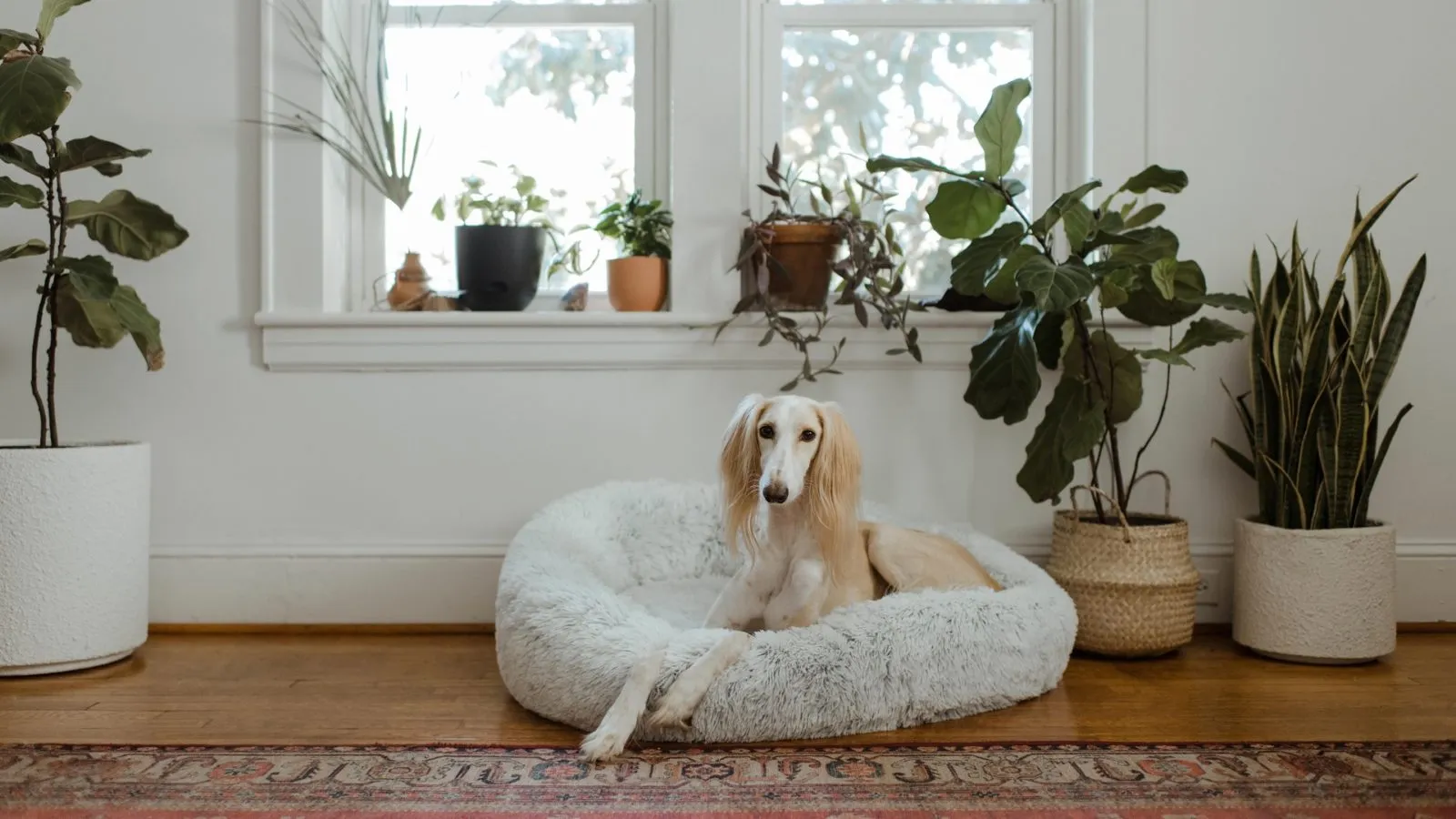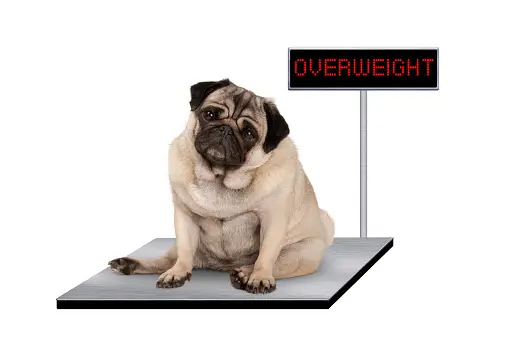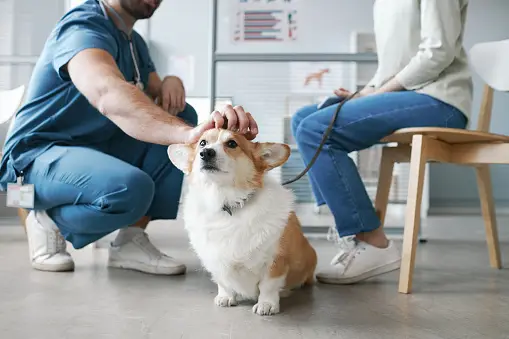It’s important to choose indoor plants that are safe for your furry friend. In this article, we will explore a variety of dog-friendly indoor plants that not only add beauty to your space but also ensure the well-being of your canine companion. Discover the perfect plants that will brighten up your home while keeping your dog safe and happy.
Why choose dog-friendly indoor plants?
Having dog-friendly indoor plants not only adds beauty and freshness to your home but also ensures the safety and well-being of your furry friend. Here are some compelling reasons to opt for dog-friendly indoor plants:
Benefits of having dog-friendly indoor plants
- Improved air quality: Dog-friendly indoor plants act as natural air purifiers, filtering out harmful toxins and releasing oxygen. This helps create a healthier living environment for both you and your dog, reducing the risk of respiratory issues.
- Stress reduction: Research has shown that being around plants can help reduce stress and anxiety levels. By incorporating dog-friendly indoor plants into your home, you can provide a calming and soothing atmosphere for both yourself and your dog.
- Enhanced mental stimulation: Dogs, like humans, need mental stimulation to stay happy and engaged. Dog-friendly indoor plants can provide visual interest and sensory experiences for your dog, stimulating their curiosity and keeping them mentally active.
- Encourages responsible pet ownership: By choosing dog-friendly indoor plants, you demonstrate your commitment to responsible pet ownership. It shows that you prioritize your dog’s safety and well-being by creating a pet-friendly environment.
Risks of toxic plants for dogs
While many indoor plants are safe for dogs, some can be toxic and pose a risk to their health. It’s essential to be aware of the potential dangers associated with toxic plants to ensure the safety of your furry companion. Here are some risks of having toxic plants around dogs:
- Poisoning: Dogs are curious creatures and may be tempted to chew on plants, especially if they are within their reach. Ingesting certain toxic plants can lead to poisoning symptoms such as gastrointestinal upset, drooling, vomiting, diarrhea, and even more severe reactions in some cases.
- Allergic reactions: Some dogs may have allergies to certain plants, causing skin irritations, itching, rashes, or respiratory issues. Identifying and avoiding such plants is crucial to prevent uncomfortable and potentially harmful allergic reactions in your dog.
- Organ damage: Certain toxic plants can cause damage to a dog’s internal organs if ingested. Liver, kidney, and gastrointestinal damage may occur, leading to long-term health complications or even fatal outcomes in severe cases.
To ensure the well-being of your dog, it’s important to choose dog-friendly indoor plants that offer numerous benefits while minimizing the risks associated with toxic plants. By doing so, you can create a safe and enjoyable environment for both you and your furry companion.
Top dog-friendly indoor plants
Spider Plant
The spider plant (Chlorophytum comosum) is a popular choice for dog owners due to its non-toxic properties. This plant is not only safe for your furry friend but also has air-purifying qualities, making it a great addition to your indoor space. Spider plants have long, arching leaves with green and white stripes, adding a touch of elegance to any room. These plants are easy to care for and can tolerate a wide range of light conditions, making them suitable for both experienced and novice plant parents.
Boston Fern
If you’re looking for a dog-friendly indoor plant that adds a lush and vibrant touch to your home, the Boston fern (Nephrolepis exaltata) is an excellent choice. This fern is known for its feathery fronds and ability to thrive in low-light conditions. Not only does it create a visually appealing atmosphere, but it also acts as a natural air humidifier, which can benefit both you and your dog. Boston ferns are non-toxic to dogs, making them a safe option for households with curious pets. However, keep in mind that the fronds of the fern can be tempting for dogs to chew on, so it’s essential to keep an eye on your furry friend around this plant.
Areca Palm
The Areca palm (Dypsis lutescens) is not only a beautiful addition to your indoor space but also a safe choice for dog owners. This palm species features graceful, feathery fronds that create an elegant tropical look. Areca palms are non-toxic to dogs, so you won’t have to worry about your pet’s safety if they happen to nibble on the plant. Additionally, these palms are known for their air-purifying abilities, helping to improve the overall air quality in your home. Areca palms thrive in bright, indirect light, making them perfect for rooms with large windows or areas that receive ample natural light.
Remember that while these plants are considered safe for dogs, it’s always a good idea to monitor your pet’s behavior around any new additions to your home. If you notice any unusual symptoms or signs of discomfort in your dog, consult your veterinarian for further guidance.
Tips for keeping your dog safe around indoor plants
Placement and accessibility
When it comes to keeping your dog safe around indoor plants, the placement and accessibility of the plants play a crucial role. Here are some tips to consider:
- Elevate plants: Keep your plants out of your dog’s reach by placing them on elevated surfaces such as shelves or hanging them from the ceiling. This will prevent your furry friend from easily accessing and potentially damaging the plants.
- Create barriers: If you have larger plants that cannot be easily elevated, consider using decorative barriers, such as baby gates or playpens, to restrict your dog’s access to them. This way, you can enjoy your indoor garden without worrying about your pup getting into mischief.
- Avoid floor-level plants: Some dogs have a habit of digging or chewing on plants, which can be harmful to both the dog and the plant. Avoid placing plants at floor level as it increases the risk of accidental ingestion or damage. Opt for higher shelves or plant stands instead.
Regular plant maintenance
Maintaining your indoor plants regularly not only promotes their health but also helps in keeping your dog safe. Follow these maintenance tips to create a pet-friendly environment:
- Remove fallen leaves and debris: Fallen leaves or petals may entice your dog to play with or chew on them. Regularly remove any fallen plant parts to prevent accidental ingestion, which could lead to digestive issues or even toxicity.
- Check for toxic plants: Some indoor plants are toxic to dogs, causing symptoms ranging from mild stomach upset to more severe health issues. Familiarize yourself with the list of toxic plants and ensure none of them are present in your indoor garden. If you are unsure about a particular plant’s toxicity, consult your veterinarian for guidance.
- Trim trailing vines: If you have trailing plants with long vines, make sure to trim them regularly. Long vines can be tempting for dogs to chew on, leading to potential choking hazards or accidental entanglement.
Training and supervision
In addition to proper plant placement and maintenance, training and supervision are essential for ensuring your dog’s safety around indoor plants. Consider the following tips:
- Teach “leave it” command: Train your dog to “leave it” when they show interest in the plants. This command can be useful to redirect their attention to a more appropriate activity and discourage them from approaching or nibbling on the plants.
- Supervise your dog: When introducing new plants or rearranging your indoor garden, closely supervise your dog’s behavior around them. This allows you to correct any unwanted behavior and reinforce positive behaviors, ensuring a safe environment for both your dog and your plants.
- Provide alternative outlets: Dogs may be drawn to plants out of boredom or a need for mental stimulation. Ensure your dog has plenty of toys, puzzles, and playtime to keep them entertained and reduce their interest in the plants.
By following these tips for keeping your dog safe around indoor plants, you can enjoy the beauty of your indoor garden while keeping your furry friend out of harm’s way. Remember, a pet-friendly environment is essential for their well-being and your peace of mind.
Incorporating dog-friendly indoor plants into your home not only adds a touch of greenery but also ensures the safety and well-being of your furry friend. By choosing plants that are non-toxic and pet-friendly, you can create a harmonious environment where both you and your dog can thrive. Remember to research and consult with experts to identify the best plants that suit your home and your dog’s needs. With a little effort and careful consideration, you can enjoy the benefits of indoor plants while keeping your dog happy and healthy.







